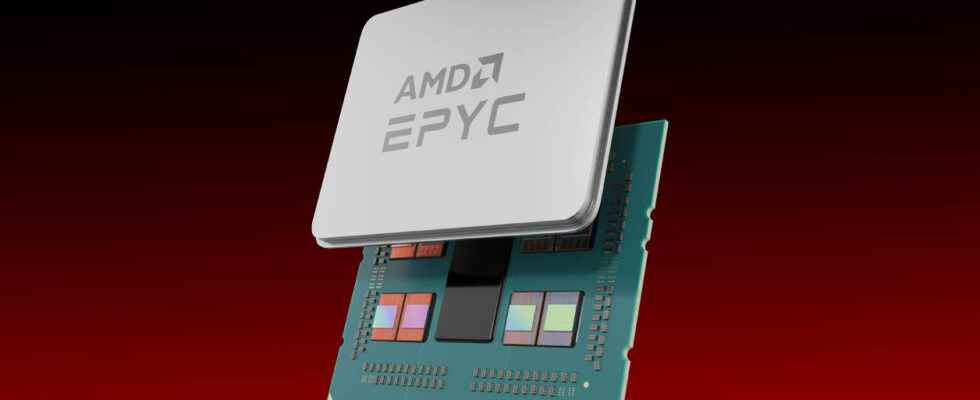AMD is giving birth to a new batch of processors… not entirely new. The EPYC 7003, code name “Milan-X” that you were talking about last year, are finally here, these chips for computing centers and other supercomputers. These processors with 16/32, 32/64 and 64/128 cores/threads benefit from an “X” at the end of their name.
This “X” is the mark of a single element in addition to the “non-X” generation: the cache memory. They are indeed still Zen 3 generation CPUs, still managing 128 PCIe 4.0 lines, up to eight DDR4 modules, and with the same TDP as the “classic” versions.
What is interesting with these chips is not their number of cores – again identical to what we know – but the amount of cache memory: no less than 768 MB!
A memory whose 66% supplement compared to the original chips was “grafted” a posteriori, literally glued on top, by the same process that AMD operates on a consumer processor – the Ryzen 7 5800X3D, of which we have you already talked about last week.

This so-called “3D V-cache” memory therefore allows a low-cost evolution: AMD (with TSMC) produces a “normal” chip, manufactures cache memory separately, glues everything together, “and there you go” a more efficient processor in certain tasks.
Sometimes even much more efficient: under certain professional software, the gains go up to +66% compared to the same chip without additional cache memory.
Read also: AMD to Stack Cache on Future CPUs (and Gamers Will Love It) (June 2021)
The operation is not done without compensation – the frequencies are revised a little downwards – but which has an advantage for many applications: the fact of having so much available on-board memory makes it possible to avoid or at least to limit back and forth with RAM. These incessant data journeys between the different types of memory (ROM, RAM, cache) are indeed the bottleneck of many calculations.
Because while it’s all well and good to have lots of hearts that go very fast, they don’t do anything until they have received the calculations to be executed! With so much memory, one can “load” or “hold” more instructions, information, patterns, etc. on the spot. And therefore make the hearts run at full speed more often.

Why did you specify that this memory addition was important? ” in some cases “ ? Simply, because not all calculations require the same resources. AMD specifies that this addition of memory mainly benefits “Computational Fluid Dynamics (CFD), Finite Element Analysis (FEA), Electronic Design Automation (EDA), and Structural Analysis. »
Read also: AMD Unveils Impressive CPUs and GPUs to Become a Data Center Champion (September 2021)
For less complex tasks, more clock (and cores) is better than more memory. That’s why the Milan-Xs don’t replace the previous chips they’re designed on, but complement AMD’s lineup.
Also see video:
Also see video:
Don’t salivate over these professional processors for large servers or even supercomputers: they cost from $3,900 to $8,800 (yes, excluding taxes, like all dollar prices). If you want a chip gaming with lots of cache, so look at the Ryzen 7 5800X3D. Or wait for the Ryzen 7000 in Zen 4 architecture which should be presented by the end of the year.
